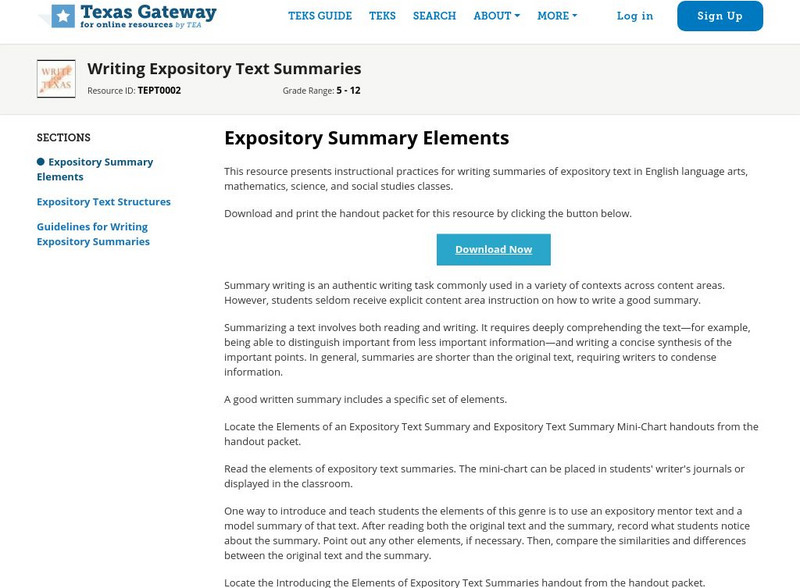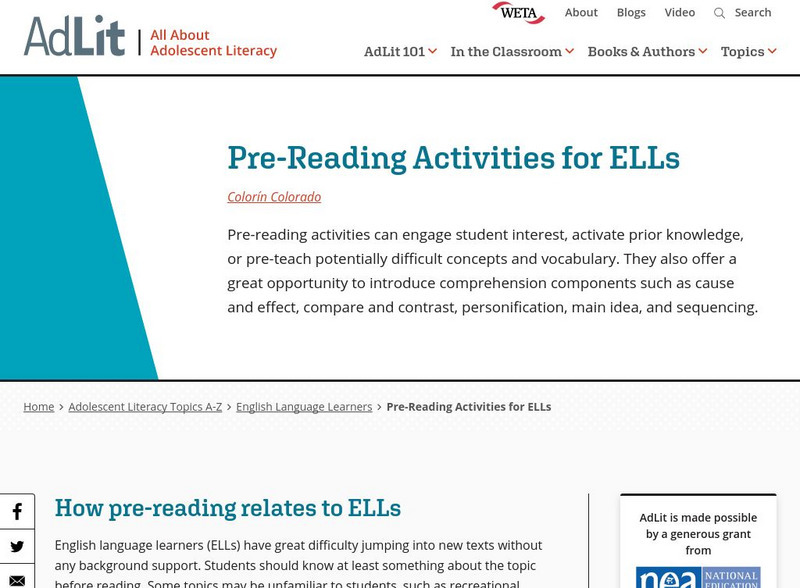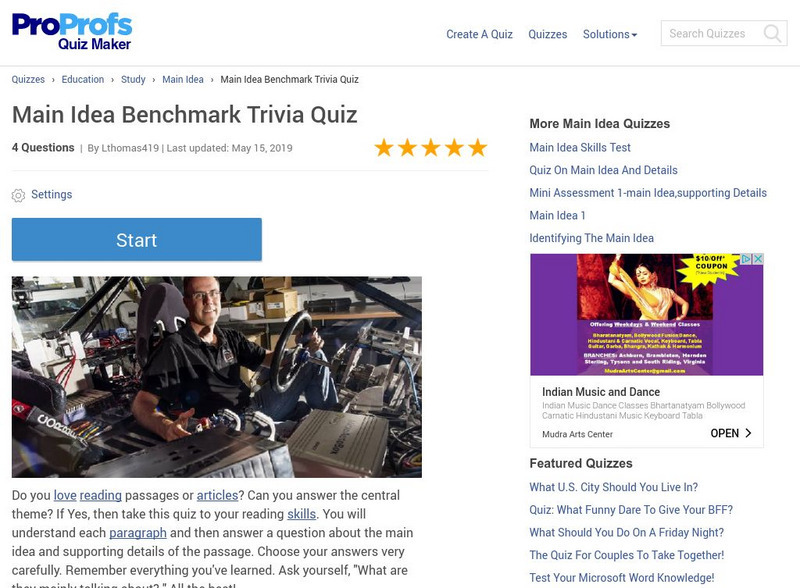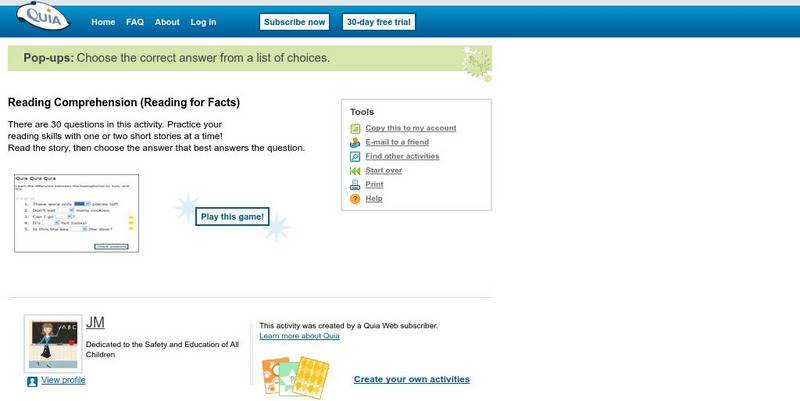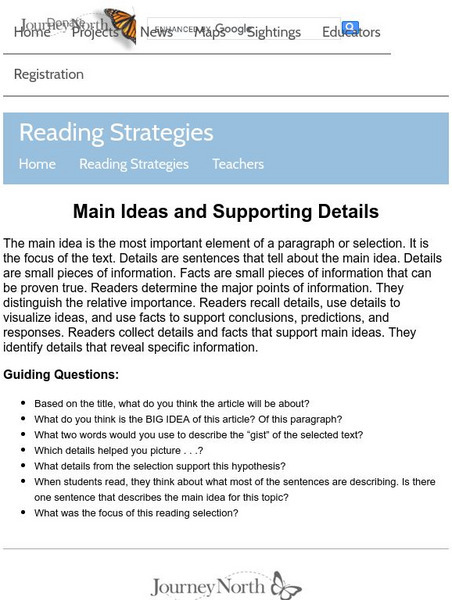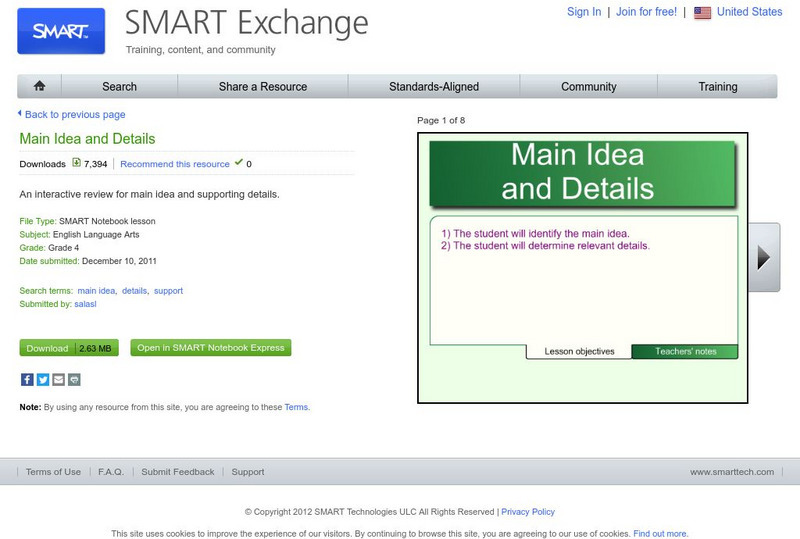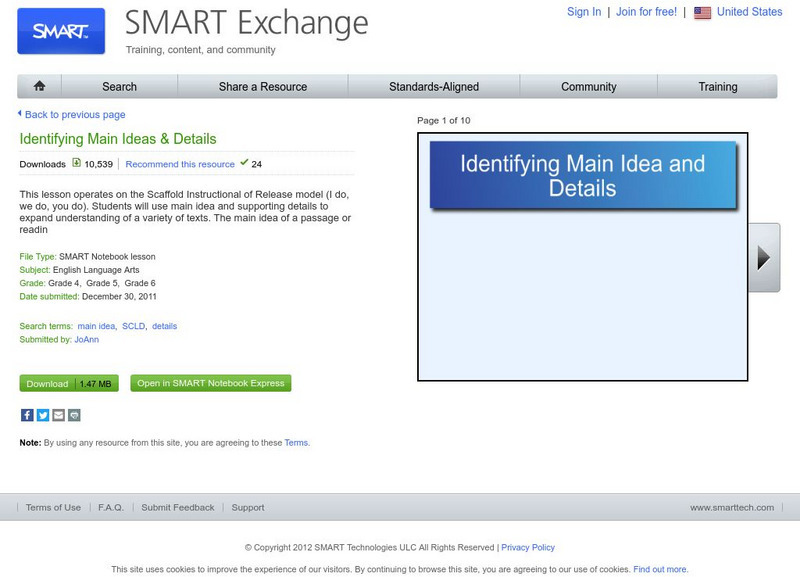Florida Center for Reading Research
Florida Center for Reading Research: Character Consideration
A lesson plan in which students read a narrative text and complete graphic organizers to analyze a character. Materials are included. [PDF]
Reading Rockets
Reading Rockets: Teach Expository Text Structure to Facilitate Comprehension
Expository text can be challenging to young readers because of the unfamiliar concepts and vocabulary it presents. Discover ways to help your students analyze expository text structures and pull apart the text to uncover the main idea...
Alabama Learning Exchange
Alex: Writing to Determine, "What Is a Pulgar?"
This lesson plan is a writing follow-up to the guided reading lesson plan, "What is a Pulgar?" It utilizes a Makes Sense Strategies Think-sheet to guide the writing.
Texas Education Agency
Texas Gateway: Writing Expository Text Summaries
This resource presents instructional practices for writing summaries of expository text in English language arts, mathematics, science, and social studies classes.
South Carolina Educational Television
Know It All: Summarizing Texts
Fifth graders will review what a summary is and complete a worksheet for practice. They will then write their own informational text and a peer will summarize.
South Carolina Educational Television
Know It All: Non Fiction Text Features
Fifth graders will use non-fiction books to identify and explain how text features help them as individual readers.
Louisiana Department of Education
Louisiana Doe: Louisiana Believes: English Language Arts: Grade 5: Shutting Out the Sky
Focused on immigrant life in the United States and how families sought the American dream, this unit offers students an understanding of how members of a culture meld into communities while trying to maintain cultural identity and honor...
Louisiana Department of Education
Louisiana Doe: Louisiana Believes: Ela Guidebooks: Summarizing
This strategy helps students refine their understanding of texts to meet reading expectations and prepare for writing about texts.
AdLit
Ad lit.org: Pre Reading Activities for El Ls
Pre-reading activities can engage student interest, activate prior knowledge, or pre-teach potentially difficult concepts and vocabulary. They also offer a great opportunity to introduce comprehension components such as cause and effect,...
Beacon Learning Center
Beacon Learning Center: Web Lessons: Get the Main Idea
This resource provides practice finding the main idea by having students read a paragraph and choose the main idea. Then it asks students to take what they have learned and apply it to a book of their choice, and then write a paragraph...
Curated OER
Ccss Literacy E Handbook: Literature: Summarize
An explanation of summarizing a selection along with a link to a model summarizing activity.
ProProfs
Pro Profs: Main Idea Benchmark
This is a four-question multiple choice quiz over the main idea; students read nonfiction passages and select the main idea. Links to related quizzes on the same topic are provided.
Quia
Quia: Metaphor Quiz
Read five short paragraphs and choose the main idea of each. Check the answers when finished to see how many were right.
Quia
Quia: Reading for Facts
This interactive quiz assesses students' reading comprehension skills of informational text passages. Students will read 30 short passages and answer question about a detail for each.
Annenberg Foundation
Annenberg Learner: Journey North: Reading Strategies: Main Ideas and Supporting Details
Learn how to identify the main ideas and supporting details in an informational text by using a list of guiding questions.
Other
Reading Quest: Strategies for Reading Comprehension: Summarizing
Teach students to summarize nonfiction text with these lesson plans. Includes worksheets and activities that can be downloaded and printed.
Curated OER
Mc Graw Hill: Informational Text: Compare Text Structures
This learning module focuses on comparing organizational patterns in informational texts including chronological order, compare and contrast, cause and effect, and problem and solutions. Click on each text structure for an explanation.
Scholastic
Scholastic: Teaching With Nonfiction: Teach Text Features
A brief lesson plan, this site offers an example of non-fiction text and a graphic organizer to help orient students to the features they need to use when reading for information.
Austin Independent School District
Austin Independent School District:teaching Summarization to Struggling Students
A lesson plan designed to teach students how to recognize an effective summary. Following the lesson plan, several practice fiction and nonfiction texts are available in both English and Spanish for grades 3, 4, and 5. Answer key...
SMART Technologies
Smart: Main Idea and Details
The interactive lesson is a review of main idea and supporting details.
Scholastic
Scholastic: Informational Text: Reading Response: Compare and Contrast
A brief graphic organizer to help students visualize the similarities and differences in a piece of informational text.
SMART Technologies
Smart: Identifying Main Ideas & Details
This lesson operates on the Scaffold Instructional of Release model (I do, we do, you do). Students will use the main idea and supporting details to expand understanding of a variety of texts.
Sophia Learning
Sophia: Descriptive Papers: Key Elements: Lesson 2
This lesson goes over words, phrases, and key elements that are included in descriptive papers. It is 2 of 2 in the series titled "Descriptive Papers: Key Elements."
EL Education
El Education: Sapling Rise a Micro Field Guide
Students create a field guide for a three foot by three foot plot of ground. Students name their plots, graph temperature, create an inventory and table to record observations, make illustrations, and write informational text based on...





